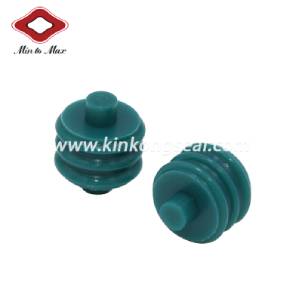Apr. 02, 2020
Mechanical seals are generally built-in. The cause of seal leakage is often determined based on experience, site observation, and instrument measurement analysis. First, find out the effect of the damaged seal on the sealing performance, and then carefully check the wear ring for the seal ring, the transmission, the loaded elastic element, the auxiliary seal, the anti-rotation mechanism, and the fastening screw. Attachments such as bases, shaft sleeves, connector cavity plugs, and sealing systems should also be thoroughly inspected. silicone single wire seal supplier to share you: What are the main reasons for mechanical seal leakage。
1.Long-term wear
Mechanical wear will cause the normal mating relationship of the sealing pair to be destroyed. When there is a certain amount of wear on the end face, the seal must make axial displacement and radial swing every time the drive shaft rotates. From the wear marks, movement and wear can be judged, and the cause of seal leakage can be determined. For example, the wear marks on the seal pair are uniform, and the parts fit well, which means that the coaxiality of the transmission part is good. The leakage at the seal end face may not be caused by the seal itself. If the leakage is constant, it means that the leakage does not occur between the two end faces, but may occur in other parts, such as the static seal. For another example, the seal leaks when it is used, and no signs of wear on the friction end surface are observed. The rotation ring may not rotate or slip relative to the stationary ring. The reason may be that the anti-rotation pin is loose or broken, or the diameter of the base is smaller than The outer diameter of the seal.

Connector Cavity Plug
2.Overheat damage
Overheating not only causes wear and tear on the sealing pair but also may cause thermal cracking and blistering. Generally, radial cracks appear on the surface of the seal ring under the effect of excessive thermal stress, which is called thermal cracking. Under short-term mechanical or thermal load, thermal cracking will occur. For example, due to dry friction, interruption of the cooling system and other thermal cracks, the seal ring wear will increase and the leakage will increase rapidly. For balanced seals, even the seal rings are separated. In order to avoid thermal cracking, it is necessary to grasp the mechanical-physical properties of the material, consider the possible thermal cracking in the design, and specify the operating conditions. Poor media lubricity, overload, high operating temperature, high linear speed, improper combination of mating materials, or a combination of the above factors can generate excessive frictional heat. If frictional heat cannot be dissipated in time, heat will be generated Cracks, which can cause leaks.
3. Chemical corrosion
Because the seal is in contact with corrosive media, surface corrosion will occur, and even severe corrosion points will be formed on the surface to form pitting corrosion. Intergranular corrosion generated on the grain boundaries of the metal will penetrate into the interior of the metal and cause further damage to cause a fracture. Corrosion performance has a great impact. Since the seals are smaller and more precise than the parts of the main unit, a material that is more resistant to corrosion than the main unit is usually selected. Experience has shown that corrosion can be accelerated by pressure, temperature, and sliding speed. The corrosion rate of seals increases exponentially with increasing temperature. When dealing with highly corrosive fluids, the use of double-face seals can minimize the impact of corrosion on seals because it has fewer parts in contact with the process fluid. This is also one of the most important principles in selecting a sealed structure under strong corrosion conditions.
4. Sealing component failure
The failure of mechanical seal parts is mostly due to the failure of auxiliary seals. One of the main reasons for mechanical seals not working properly due to leakage is also the failure of O-rings. O-ring failure manifests itself as aging, permanent deformation, swelling deformation, distortion and extrusion damage. Therefore, when selecting O-rings, the safe use temperature of synthetic rubber should be considered, and rubber O-rings with larger cross-sections should be selected as much as possible to appropriately increase the hardness. The grooved assembly structure is used to properly select materials through immersion tests. When necessary, Use composite materials, such as rubber-coated PTFE seals.
Tel: +86 13705057546
E-mail: info@kinkong.com
Add: #27 Hengjing Xiyi Road, Liushi Town, Yueqing City, Zhejiang Province, 325604, China.
Copyright © Min To Max All Rights Reserved |